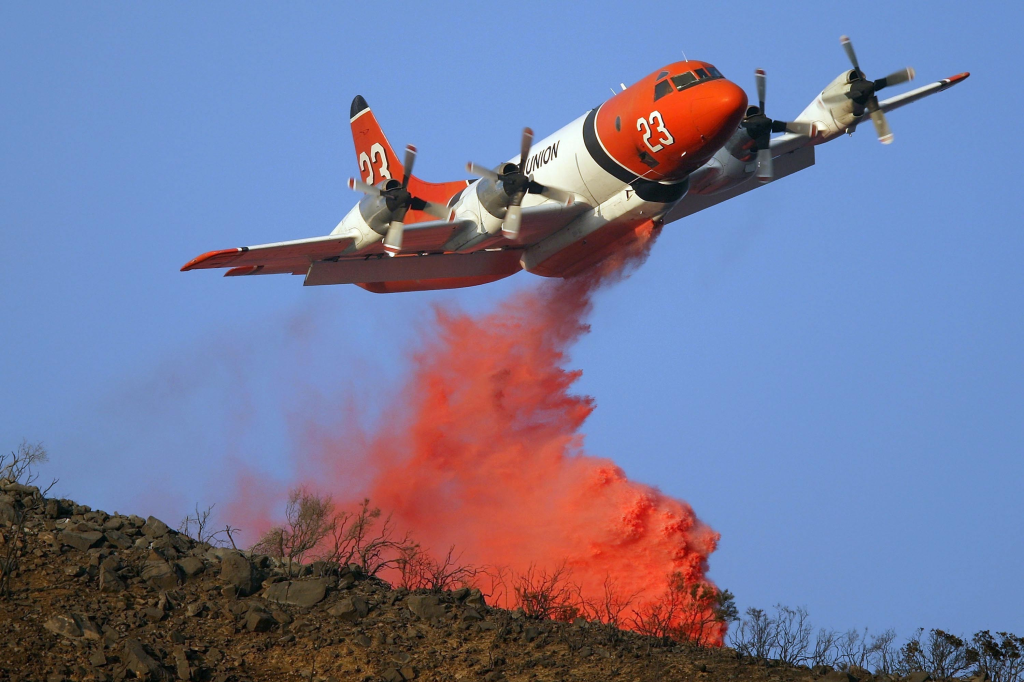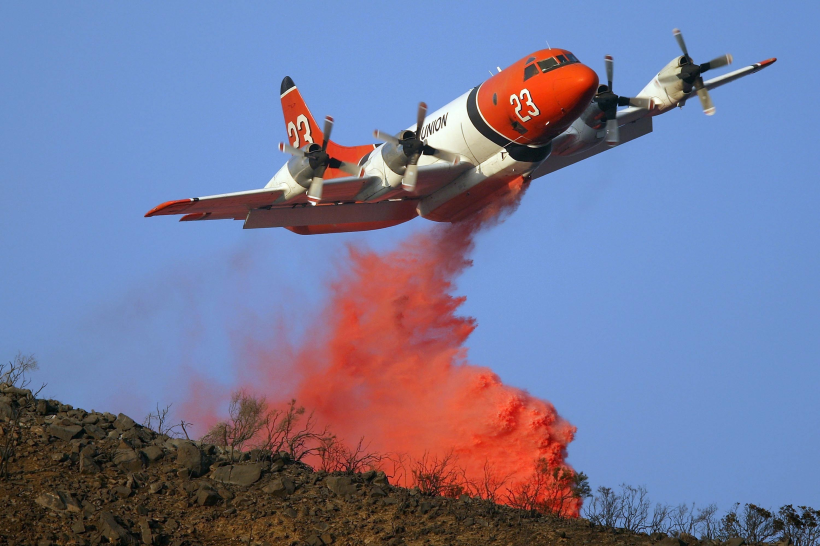
Photo Credit: kalw.org (David McNew Getty Images)
Here’s the scenario: a forest fire is at 10,000 acres in dry brush with steep, difficult terrain with high winds, low humidity, and is showing no signs of slowing down anytime soon. This kind of situation can prove as a forest fire fighter’s worst nightmare and provides significant challenges and risks to everyone involved in the fire fighting effort. Add to this situation town center just a few miles from the fire and you can really begin to see how this could get out of hand quickly. The fire chief has to make a decision fast on how to turn the tides on the fire. How can we slow the fire? Tactically speaking there are a relatively small number of ways to stop the forward progress of the fire. One such way is to essentially dig out all the brush in an area in order to create a fireline, or a section of ground with little-to-no fuel (i.e. trees, brush, etc.) by using everything from bull dozers to hand shovels. Clearly this method has its disadvantages: it is time consuming, labor intensive, pulls resources away from the front lines, may pose risk to a large number of personnel, and may prove all but impossible in difficult terrain; thus, we need a better way to stunt the growth of the fire quickly and efficiently. Enter air tankers. Air tankers are firefighting airplanes that have been modified to deliver firefighting liquids and materials to a fire. These tankers may be filled in a number of ways from being filled on the ground from a modified fuel truck to literally skimming a body of water to scoop up liquid. Once the tanker has taken on its liquid, it may either use the liquid as is, or in some cases the liquid may be modified during the filling process. In California, most commonly we see these air tankers dropping bright orange stuff over the hills around a fire. As many of you may know, this orange stuff is fire retardant, but not just any fire retardant. Once upon a time the fire retardants used proved toxic to wildlife & healthy soil/plant-life alike, but these materials have been revolutionized to not only avoid negatively affecting the surrounding area, but to actually stimulate regrowth by acting as a fertilizer, while also proving less toxic to the surrounding nature. Along with the fertilizer-like additive, many retardants will contain a healthy number of additives and agents to improve the retardant efficiency…these may include surfactants (wetting agents which work to decrease surface tension to allow greater wetting of the surrounding trees/brush/etc.), corrosion inhibitors (for protecting structures from corroding or rusting), thickening agents (i.e. guar gum to reduce run-off), and of course ferric oxide (a corrosion byproduct and oxide of iron, often called rust) which gives the retardant its distinctive orange color, allowing the coated areas to be located/spotted from a distance. Aerial firefighting is a great example of how existing science, engineering, and technology can all be taken and modified to be re-purposed towards a new application. Lastly, a big thank you to all of the firefighters out there who work so hard to protect us from these events, especially the highly skilled pilots who conduct these dangerous operations, many of whom formerly also served our country flying in the military, just as many law enforcement and airline pilots have!

